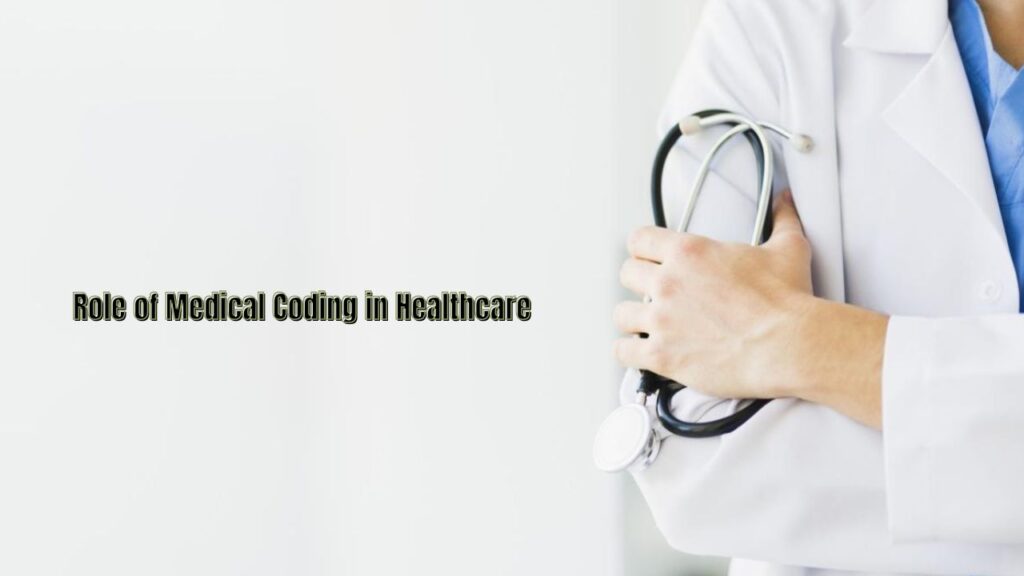Table of Contents
Uncover the vital role of medical coding in healthcare. Learn how it impacts billing, data analysis, and patient care. Discover why accurate coding is crucial for healthcare success. What if I told you that a simple code could be the key to more effective healthcare delivery? Welcome to the field of medical coding. It is the process of converting healthcare diagnoses, procedures, services, and equipment into universal medical alphanumeric codes. But why does it matter? These codes are important for several reasons, including assuring accurate billing and improving patient care.
Medical coding is the foundation of effective healthcare administration. In essence, medical coding is the language that connects healthcare practitioners, payers, and researchers. Its precision and efficiency are crucial to healthcare organizations’ financial health and overall quality of services.
History of Medical Coding
As far as early beginnings, medical coding has an interesting history that goes back to antiquity. Ancient Egyptian and Greek writings contain early medical records. Famous physicians like Hippocrates and Galen documented medical knowledge, which influenced Western medicine for centuries. While in the Islamic realm, physicians such as Avicenna wrote substantial medical literature. The introduction of nosology, or disease classification, in the 18th century helped to standardize medical language. Carl Linnaeus’ “Genera Morborum” is among his most notable publications.
However, current medical coding dates back to the early twentieth century, when the World Health Organization (WHO) introduced the International Classification of Diseases (ICD). However, evolution throughout time demonstrated that the ICD has evolved greatly since its start. Along with ICD, various coding systems, such as CPT and HCPCS, have been developed to serve specialized objectives in healthcare documentation and billing. The transition to electronic health records (EHRs) has strengthened and standardized medical coding practices.

Types of Medical Coding Systems
ICD (International Classification of Diseases)
ICD codes are used worldwide to categorize diseases and health problems. These codes provide a consistent vocabulary for disease reporting and monitoring, making it easier to compare health data from different nations and time periods. With regular updates, the ICD guarantees that the medical community speaks the same language when discussing and managing health information, conducting research, and improving global health outcomes.
CPT (Current Procedural Terminology)
The American Medical Association (AMA) developed CPT codes, which are used to designate medical, surgical, and diagnostic services. These codes promote consistency in reporting medical services and procedures, that is required for billing and insurance purposes.
These codes are critical for healthcare providers because they affect reimbursement from insurance companies and government programs. CPT codes are required for accurate billing, claims processing, and data analysis in healthcare. The system is regularly updated to include new medical technology and processes, ensuring its relevance in today’s dynamic healthcare sector.
HCPCS (Healthcare Common Procedure Coding System)
HCPCS is a collection of codes that describe medical procedures, supplies, products, and services. It is classified into two levels: Level I, which includes CPT codes for physician-based treatments, and Level II, which includes codes for products, supplies, and services that CPT does not cover. HCPCS is largely used for Medicare and Medicaid billing, but several commercial insurers have also adopted it. This standardized coding system guarantees that healthcare services are reported consistently and accurately, making claims processing, reimbursement, and data analysis easier for providers and payers.
SNOMED CT (Systematized Nomenclature of Medicine – Clinical Terms)
A complete clinical terminology system for electronic health records and clinical reporting. SNOMED CT, in contrast to billing and reimbursement-focused coding systems such as ICD-10-CM and CPT, provides a thorough and structured representation of medical concepts. The broad scope of SNOMED CT can be difficult to deploy and maintain. Careful mapping to different coding systems is required for billing and reimbursement purposes.
DRG (Diagnosis-Related Groups)
DRGs are a classification system that divides patients into groups based on their primary diagnosis, secondary diagnoses, procedures performed, age, gender, and discharge status. The idea is to group patients based on comparable clinical criteria and resource use. The inpatient hospital settings categorize patients based on their diagnosis and treatment, which influences payment.
The Role of Medical Coders
Medical coders perform an important role in healthcare. They review clinical statements and use classification techniques to provide standard codes. Their tasks include maintaining accurate patient records, easing billing processes, and assisting healthcare providers. Becoming a medical coder necessitates a sharp eye for detail, strong analytical skills, and a complete mastery of medical language and codes.
Many coders earn certifications from reputable organizations such as the AAPC or AHIMA. Medical coders guarantee that healthcare professionals are compensated fairly while keeping medical records compliant. Their job also helps to provide vital health data for research, public health initiatives, and quality improvement efforts. Fundamentally, medical coders serve as the healthcare industry’s linguistic interpreters, allowing for seamless operations and educated decisions.
Medical Coding and Healthcare Management
Medical coding is an essential part of healthcare management. It forms the basis for precise financial operations, effective revenue cycle management, and data-driven decision-making. Medical coders assist with timely and correct compensation by converting complex medical information into standardized codes, reducing claim denials, and increasing cash flow.
Furthermore, exact coding promotes robust data analytics, allowing healthcare organizations to spot patterns, monitor performance, and improve resource allocation. Medical coding and healthcare administration work together to improve financial stability, operational efficiency, and overall patient care quality. Accurate coding is critical to patient care. It guarantees that patient records are precise, allowing healthcare providers to make informed judgments. Proper coding also simplifies research and public health reporting, resulting in better healthcare results.
Impact on Billing and Reimbursement
Ensuring Accurate Billing: Medical coding is necessary for proper billing. Codes translate services performed into billable charges, ensuring that healthcare practitioners are properly reimbursed. This accuracy avoids overbilling and underbilling, both of which can have major financial consequences.
Facilitating Insurance Claims: Insurance companies use medical codes to process claims. Accurate coding ensures that claims are processed efficiently and correctly, eliminating delays and conflicts between providers and insurers.
Legal and Ethical Considerations
- Medical coders must follow a variety of standards, including the Health Insurance Portability and Accountability Act (HIPAA) in the United States. Compliance with these regulations guarantees that patient information is handled correctly and that coding processes adhere to legal guidelines.
- Maintaining patient anonymity is a key ethical consideration in medical coding. Coders must guarantee that patient data is safe and utilized only for lawful purposes.
Challenges in Medical Coding
1. Medical coders frequently encounter problems such as sophisticated coding systems, frequent revisions to coding standards, and the need for accuracy under tight timeframes. Miscommunication between healthcare professionals and coders can also result in errors.
2. Coders can overcome these problems by continuing their education and training, communicating effectively, and using advanced coding software. Staying up to speed on coding rules and networking with professionals also help them.
3. The future of medical coding is directly linked to technology improvements. AI and machine learning are increasingly being used to automate coding operations, increase efficiency, and reduce errors.
4. As healthcare advances, so does the demand for updated coding systems. Emerging health conditions, new therapies, and advances in medical technology demand ongoing modifications to coding guidelines.
Training and Certification
- Numerous certification programs are available for medical coders. Organizations like AAPC and AHIMA provide certification tests that authenticate a coder’s knowledge, and skills, and increase job opportunities.
- Medical coders must stay up-to-date on coding changes and industry advances through ongoing education. Many organizations provide workshops, webinars, and courses to facilitate continual learning.
- Several software solutions help medical coders with their work. These include 3M CodeFinder, Optum360 EncoderPro, and TruCode Encoder, among others. These technologies simplify coding operations, increase accuracy, and boost productivity. Coding software provides various advantages, including lower mistake rates, higher efficiency, and better adherence to code standards. These technologies also give coders current information and help.
Successful Implementation of Medical Coding
Hospitals and clinics around the world have successfully utilized medical coding systems to improve their operations. For example, a case study from a big hospital demonstrated a substantial decrease in billing errors and speedier insurance claim processing after implementing an advanced coding system. Learning from mistakes is critical in medical coding.
For example, a clinic suffered significant financial losses as a result of coding errors. They were able to solve these problems and improve their financial situation by investing in training and modernizing their coding techniques. AI and machine learning are rapidly being utilized to improve coding efficiency, reduce errors, and increase accuracy.
Global Perspectives on Medical Coding
Medical coding offers a difficult perspective due to differences in healthcare systems, legislation, and reimbursement schemes. While systems such as ICD and CPT provide a basic structure, their use and interpretation might vary greatly between countries. For example, countries with universal healthcare systems frequently have centralized coding and reimbursement mechanisms, which promotes standardization.
In contrast, areas with a combination of public and private insurance may face more complicated coding requirements. The introduction of electronic health records (EHRs) is hastening the global adoption of standardized coding systems, although problems such as data interoperability and cultural variations remain. Continuous integration of coding systems with electronic health records is intended to increase efficiency and patient care.
Differences Across Countries
Medical coding practices differ across the globe. While the United States predominantly employs ICD-10-CM for diagnostic coding, other nations may use various versions or additional coding systems to fulfill their unique healthcare requirements.
International Standards and Practices
Organizations such as the World Health Organization play a vital role in creating international medical coding standards. These standards ensure that health data is consistent and comparable across countries, therefore allowing global health research and collaboration. Furthermore, the role of medical coders can change. In some countries, they are highly competent professionals with extensive training, however on the other side, the position may be part of a larger administrative function. This variability emphasizes the importance of ongoing adaptation and skill development in medical coding to meet the changing global healthcare scene.
Related Reading: Risk Adjustment in Medical Coding


